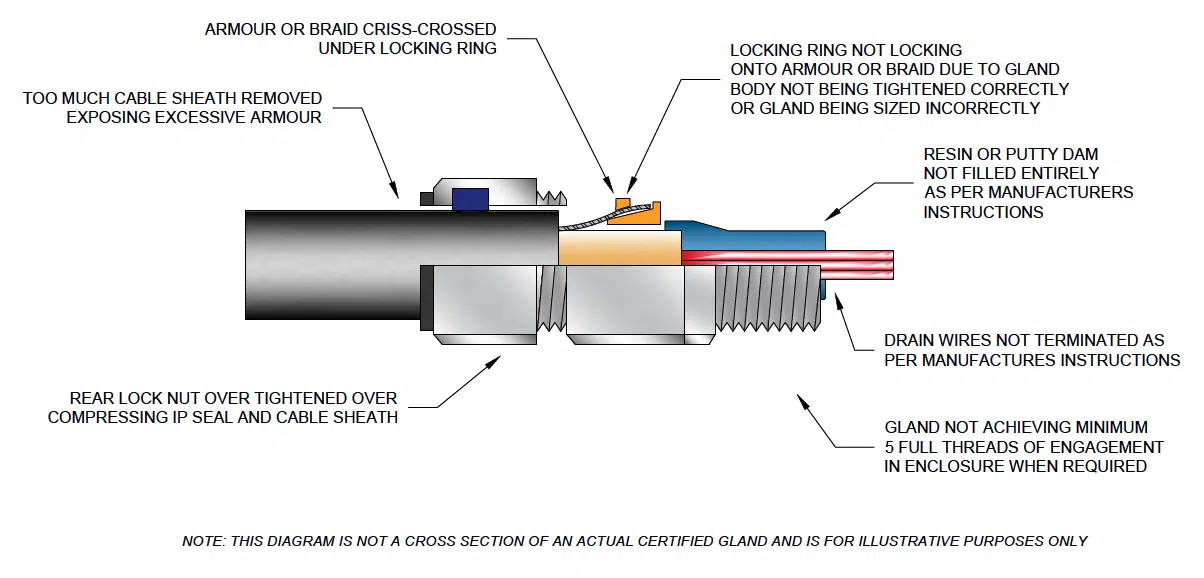9 Simple Techniques For Roar Solutions
9 Simple Techniques For Roar Solutions
Blog Article
The Best Guide To Roar Solutions
Table of ContentsAbout Roar SolutionsExamine This Report on Roar SolutionsAn Unbiased View of Roar Solutions
In order to protect installments from a prospective explosion an approach of analysing and identifying a potentially unsafe area is called for. The function of this is to make certain the appropriate option and installation of devices to eventually stop an explosion and to make certain security of life.
(https://www.interweave.com/plus_old/members/roarsolutions/profile/)
No devices needs to be mounted where the surface area temperature level of the tools is higher than the ignition temperature of the offered hazard. Below are some usual dirt unsafe and their minimal ignition temperature level. Coal Dirt 380C 225C Polythene 420C (melts) Methyl Cellulose 420C 320C Starch 460C 435C Flour 490C 340C Sugar 490C 460C Grain Dust 510C 300C Phenolic Resin 530C > 450C Aluminium 590C > 450C PVC 700C > 450C Soot 810C 570C The probability of the danger being present in a concentration high sufficient to cause an ignition will vary from location to area.
In order to identify this threat an installment is separated into areas of risk depending upon the amount of time the dangerous is existing. These locations are referred to as Zones. For gases and vapours and dirts and fibers there are three zones. Area 0 Zone 20 A hazardous ambience is very likely to be present and may exist for extended periods of time (> 1000 hours each year) or also continuously Area 1 Zone 21 A dangerous atmosphere is feasible but not likely to be existing for extended periods of time (> 10 450 C [842 F] A category of T6 means the minimum ignition temperature level is > 85 C [185 F] Harmful area electric devices maybe made for use in greater ambient temperatures. This would certainly suggested on the rating plate e.g. EExe II C T3 Ta + 60C( This suggests at 60C ambient T3 will not be gone beyond) T1 T1, T2, T3, T4, T5, T6 T2 T2, T3, T4, T5, T6 T3 T3, T4, T5, T6 T4 T4, T5, T6 T5 T5, T6 T6 T6 A T Class rating of T1 means the optimum surface temperature level created by the instrument at 40 C is 450 C. Thinking the associated T Course and Temperature score for the equipment are ideal for the area, you can constantly use an instrument with a much more stringent Division ranking than required for the area. There isn't a clear solution to this concern unfortunately. It really does rely on the type of devices and what repairs need to be accomplished. Devices with particular examination procedures that can not be performed in the field in order to achieve/maintain 3rd celebration score. Have to come back to the manufacturing facility if it is before the equipment's service. Area Repair By Authorised Worker: Complicated testing might not be called for however specific treatments may need to be complied with in order for the equipment to preserve its 3rd event rating. Authorized employees have look at this now to be used to carry out the work correctly Repair must be a like for like replacement. New component should be thought about as a straight substitute needing no unique testing of the devices after the repair service is full. Each tool with a harmful ranking ought to be examined separately. These are detailed at a high degree listed below, however, for even more in-depth info, please refer directly to the guidelines.
An Unbiased View of Roar Solutions
The devices register is a detailed database of equipment documents that consists of a minimum set of areas to recognize each product's place, technical specifications, Ex lover classification, age, and ecological information. The ratio of Detailed to Shut assessments will be determined by the Tools Danger, which is evaluated based on ignition risk (the chance of a resource of ignition versus the probability of a combustible environment )and the hazardous location classification
( Zone 0Area 1, or 2). Implementing a robust Risk-Based Inspection( RBI )method is important for guaranteeing conformity and security in taking care of Electrical Tools in Hazardous Areas( EEHA).
Not known Incorrect Statements About Roar Solutions

In regards to explosive threat, a harmful area is a setting in which an eruptive atmosphere exists (or might be expected to be existing) in quantities that require unique precautions for the building and construction, installment and use of tools. eeha certificate. In this article we check out the challenges encountered in the workplace, the risk control steps, and the needed competencies to function securely
It issues of modern life that we produce, store or manage a range of gases or fluids that are regarded flammable, and a variety of dusts that are considered flammable. These compounds can, in particular conditions, develop eruptive environments and these can have major and unfortunate consequences. Many of us recognize with the fire triangle eliminate any kind of one of the three components and the fire can not occur, however what does this mean in the context of unsafe areas? When breaking this down into its most basic terms it is basically: a combination of a specific quantity of launch or leakage of a particular compound or product, blending with ambient oxygen, and the visibility of a source of ignition.
In a lot of circumstances, we can do little regarding the degrees of oxygen in the air, however we can have considerable impact on resources of ignition, for instance electric devices. Harmful areas are recorded on the harmful location classification drawing and are determined on-site by the triangular "EX LOVER" indication. Right here, amongst other key information, zones are divided right into 3 types depending upon the danger, the probability and duration that an explosive atmosphere will certainly exist; Area 0 or 20 is considered the most hazardous and Area 2 or 22 is regarded the least.
Report this page